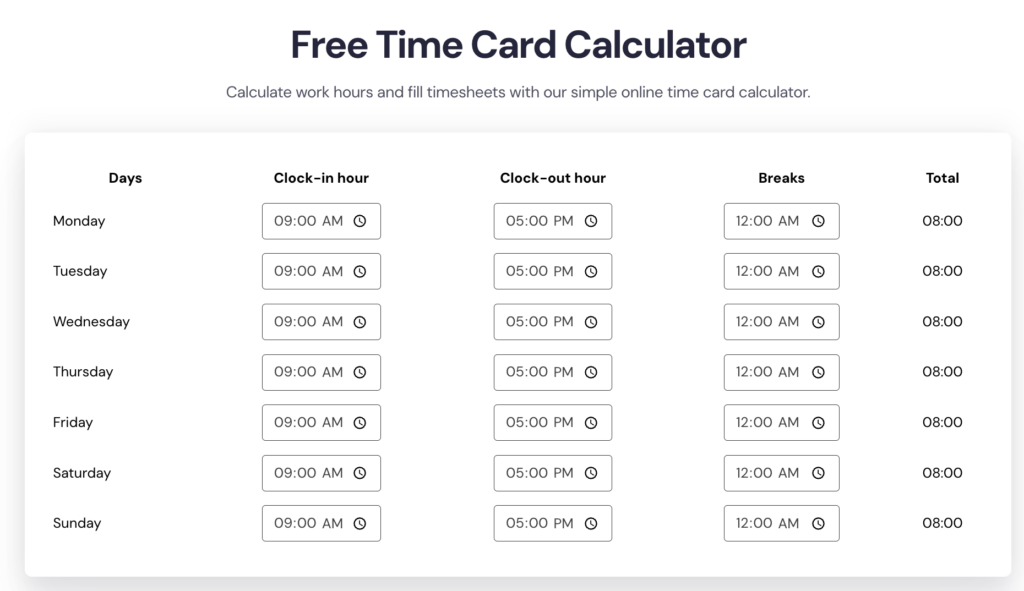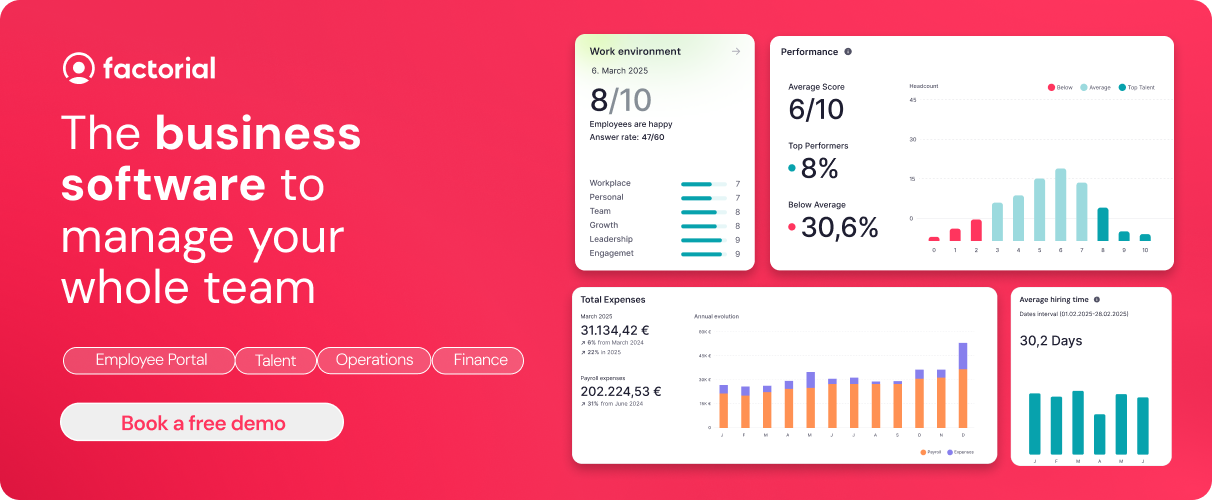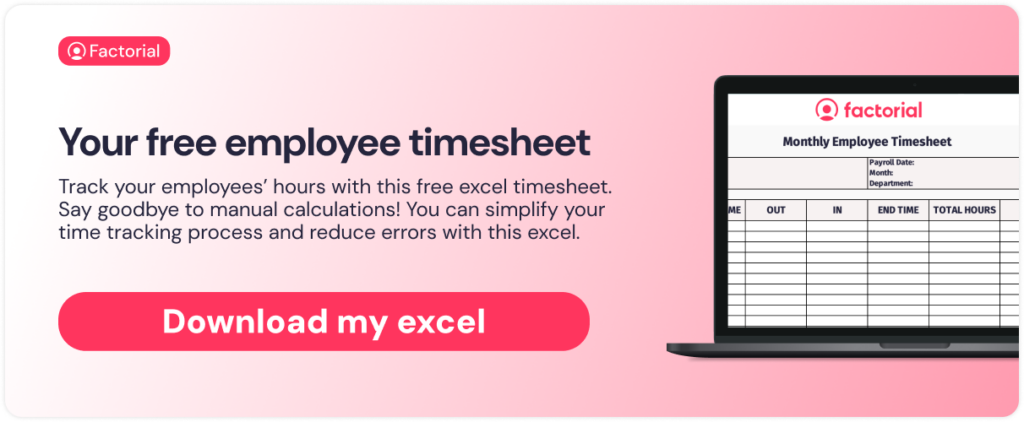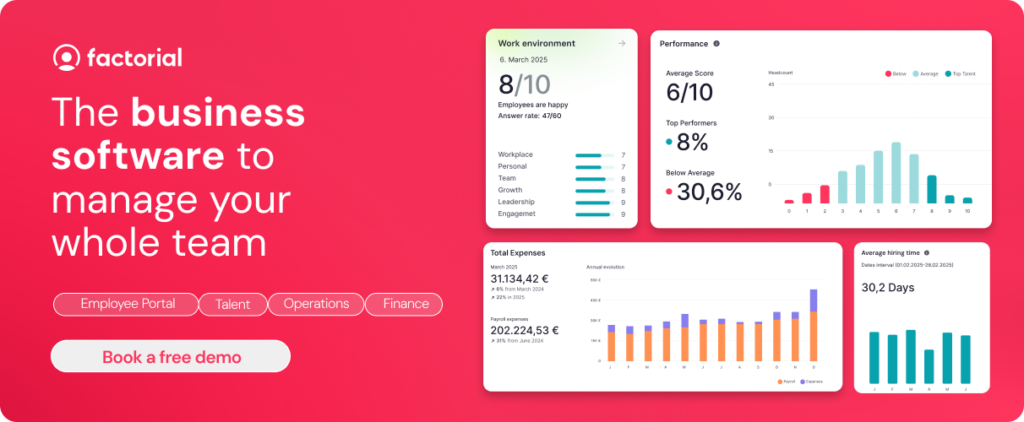One of the many important functions of the human resources department is working out how to calculate employee hours worked. Keeping track of employee working hours is not only very important for your productivity, but it is also a legal obligation.
For example, the FLSA does not require employers to use time clocks, time cards, or any other specific timekeeping system, but you do need to maintain accurate records of hours worked by nonexempt employees.
So, what is the best method for calculating and keeping track of employee hours worked?
In this post, we will look at the benefits of using a work time calculator. We will also look at how you should be calculating hours worked per day and per week, and the best way to manage employee time tracking in your business.
Affordable and easy-to-use time tracking software ✅
What are Work Hours?
Work hours refer to the time an employee spends on duty, whether it is on employer premises or working remotely. It is an employee’s standard, scheduled paid or contracted hours, and it does not include any overtime worked by exempt employees.
Although FLSA wage and hour laws do not specify how data should be collected and managed and whether a time and attendance app should be used, the federal law on timesheets does state that it is mandatory to keep a record of employee working hours for hourly, non-exempt employees as well as exempt and non-exempt salaried employees. This includes hours worked per day, clocking in and out times, breaks, overtime, wages paid, and other conditions of employment.
What’s more, if you hire government contractors at your organization then you need to ensure you comply with DCAA timekeeping requirements. This includes making sure you create and distribute a timekeeping policy, and that you track hours daily and maintain records for a minimum of 2 years.
What is a Work Time Calculator?
One solution to “how to calculate employee hours worked” is using a work time calculator.
A work time calculator, also known as an average hours calculator, is a method for calculating the hours that an employee has worked during a given period of time. The most common solutions are:
- Excel spreadsheet: You can either create your own Excel timesheet template, or you can download and customize a template. An Excel timesheet template is very easy to use, provided your employees follow regular shift patterns and working arrangements are not too complicated. For operations with more complex needs than a simple timesheet, restaurant employee scheduling software offers a dynamic alternative that can automatically handle varying shift patterns, employee availability, and last-minute changes with far greater efficiency than a static spreadsheet.
- Free online work time calculator. There are a variety of websites for this. You just add the start and stop times for employees and confirm any breaks. The work time calculator then creates a spreadsheet with totals for your daily and weekly work hours. Although this solution is cost-effective, it can be very time-consuming having to enter all this data manually each day for each employee.
- Automated time tracking software. This relies on digital timecards where employees clock in and clock out each time they start and finish work or take a break (usually straight from their mobile). Some solutions, such as Factorial’s time tracking software even offer geofencing features so that employees can clock in and out remotely. Great for companies that offer flexible work models.
How to Calculate Employee Hours Worked
Let’s take a look now at how to calculate employee hours worked manually.
Just follow these steps:
Step 1: Establish Start Time and End Time
As simple as it sounds. You just need to make a note of the time an employee started work on a given day, and the time they finished for the day.
Step 2: Convert to Military Time
If you keep track of time using the 12-hour clock system (am/pm), you need to convert start and end times into the 24-hour clock system.
The simplest way to calculate military time is if you see an hour greater than 12, subtract 12 to get the p.m. time. For example, it’s 1700. (17 – 12 = 5:00 pm).
Step 3: Subtract Start time from End Time
You can use a simple calculation to get the total employee hours worked.
For example:
If an employee started work at 09:00 (9am) and finished work at 18:15 (6:15pm) then the calculation would be:
18:15 – 09:00 = 9.15
So their workday was 9 hours and 15 minutes!
Step 4: Subtract Unpaid Breaks
If you pay your employees an hourly pay rate, then you will now need to subtract any time spent on breaks.
For example, if the employee in the above example took a 1 hour break for lunch, then the calculation would be:
9h15mins (time worked) – 1 (hour break) = 8h15mins worked in total (excluding break)
Step 5: Convert to Decimal Format
The final step, if you haven’t already done so to calculate your employee hours worked for a given day is to convert your numbers to decimal format. This will make it easier to multiply it with your hourly rate.
For the decimal value of the minutes, simply divide the minutes by 60.
For example:
15 minutes / 60 = 0.25
So, if an employee worked for 8 hours and 15 minutes, their total calculation would be 8.25.
Get your free 7 day trial of our Business Management Software. 👆 It’s designed to be simple, powerful, and scalable for global teams.
How to Calculate Average Hours Worked Per Week
If you need to manually work out how to calculate employee hours worked per week instead of per day, then you need to take one more step.
If your employee works the same hours every week then this is simple. Just multiply the hours worked per day by the number of days worked per week.
So if the employee from the above example works 8 hours and 15 minutes every day, and they work 5 days per week, then the calculation would be:
8.25 (hours per day) x 5 (days per week) = 41.25 hours worked per week
If an employee works different schedules every day, then you will need to calculate hours worked for each day. You will then need to add up the total for each day to get their hours worked in a given week. Don’t forget to take into account holidays, vacation days, or paid or unpaid time off.
This is obviously very tedious and time-consuming. You may want to consider using an Excel timesheet or software solution instead. Let’s finish by taking a look at both these solutions.
![]()
How to Calculate Hours Worked in Excel
We’ve seen how to calculate employee hours worked manually. Now let’s take a look at how you can use an Excel timesheet to automatically count work hours for employees.
You can create your own Excel template from scratch. Just use different formulas to add work hours and calculate totals for specific periods. For example:
- In A1, enter Time In.
- Next, in B1, enter Time Out.
- Then in C1, enter Hours Worked.
- Right-click C2 and select Format Cells. On the Number tab, select Time from the Category list box and click OK.
- In C2, enter the following formula: =IF(B2<A2,B2+1,B2)-A2
- Total hours worked is displayed in C2.
Now you know how to calculate hours worked in excel. However, there’s a much simpler alternative. Download an automated Excel timesheet calculator, such as Factorial’s free ready-to-print Excel template, to save you time. This simplifies the time tracking process, reduces errors, and ensures you have the right data to calculate payroll. Plus, a calculator can be a great tool for accurately measuring and reviewing employee performance.
How to Calculate Employee Hours Worked (The Easy Way)
The easiest way to calculate employee hours worked in your company is to use a time tracking app such as Factorial’s low-cost time and expense tracking solution. This can help you easily collect & verify timesheets, calculate employee wages according to local laws and employment contracts, and ensure employees are working within established laws for working hours and breaks.
You also get the following benefits:
- An intuitive and productive platform designed with both managers and employees in mind.
- Employee clock in/out system for tracking working hours so that you pay overtime and time and a half in line with wage and hour laws.
- Ability to monitor working hours
- Accurate records of employee timesheets
- Hours are automatically synchronized with payroll
- Features for organizing work rotas
- Access to attendance in real-time
- Shift swapping features for when employees can’t make their scheduled shift
- Document management, detailed reports, and payroll summaries
Save yourself the headache of managing employee hours with a basic time tracking template and let Factorial keep you on track with its time attendance software. Sign up for your free trial today!





